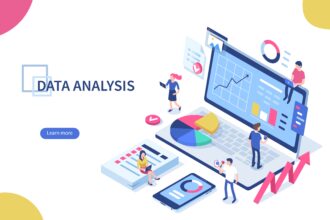Big data has gone mainstream. In 2016, the market stood at $130.1 billion, but at the beginning of 2017, it was projected to top $203 billion as soon as 2020. What was once a way for companies to gain a competitive edge is now a must for any company looking to grow and compete in the modern market, regardless of industry. Executives are catching on to this reality: 59% of global executives understand the importance of big data to their organizations, and are taking steps to implement data collection and analysis within their companies. However, big datais only effective when used correctly—simply acknowledging the importance of big data and investing in it isn’t enough. Successfully leveraging the potential value of data involves meeting and overcoming certain challenges—and knowing what to do with the knowledge gained from analytics. Read on for some valuable resources and tips for making informed decisions about this important business tool.
Acknowledging the Challenges
Some organizations put big data on a pedestal, but there are some significant challenges that come with trying to collect and analyze high-quality data—in fact, 94% of organizations have come upon issues when trying to improve their data. Some of the issues that come up include problems like a lack of knowledge, skills, and personnel, while others just find there are financial barriers to success. Externally, other sources of worry include security risks, the sheer volume of data coming in, and problems managing the incoming data stream.
Executives can help mitigate and head off these problems by learning as much as possible about the value of big data and becoming familiar for best practices and common pitfalls.
Best Practices for Maximizing Big Data Benefits
It’s easy to be intimidated by the task of getting the most out of incoming data. If you follow best practices, however, you can minimize inefficiencies and gain valuable insights from your company’s valuable data. Executive understanding and buy-in makes a big difference in the success or failure of big data programs, because quality data analysis requires funding and a team of skilled analysts and data scientists. Additionally, big data should not be confined to one area of the company—it should be used across the entire organization in order to be successful. In fact, companies with the most successful programs have implemented big data in 72% of operations, vs. 49% in those without profitable big data programs.
To use big data successfully, the first step is to create a strategy for implementing and managing data and analytics. Without a clear strategy, many valuable opportunities will be missed, and the data can easily become jumbled and corrupted. Data must also be “sanitized” close to the source in order to provide quality data for analysis that will yield reliable information.
Of course, it’s tempting to try and keep big data operations as lean as possible, but that doesn’t mean it’s a good idea to skimp on hiring and choose underqualified team members, or avoid investing in the proper tools and platforms. Big data doesn’t work when you don’t recognize its complexity and fail to take the necessary steps to build a profitable, growth-enhancing data program.









